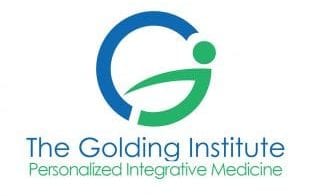
Not too long ago, we all thought cholesterol was bad, period. That it “clogged” our arteries, which could stop our hearts, and that all food that either contain it or raise it should be avoided. But then medical science progressed and we realised not all cholesterol is nasty. We made a useful distinction between low density lipoprotein (LDL), or “bad” cholesterol, and high density lipoprotein (HDL), or “good” cholesterol, and we developed tests to measure each as part of an overall cholesterol count.
The higher your HDL and the lower your LDL, the better, we thought. We even developed a special class of medicine, called statins, to push our cholesterol ratios in this direction by brute force, but in the process causing havoc in places of the body where cholesterol is needed, like the brain. But who cares? As long as our LDL cholesterol stayed as low as possible, right? Wrong.
A worrying number of people still died of heart attacks, even though they had a very low LDL count. Today, the “good” and “bad” cholesterol theory is also seen as oversimplified. We now know that it’s not simply LDL cholesterol that creates plaque build-up, but oxidised and inflamed, or “damaged” LDL. This is why indicators of inflammation in the body have also become important measurements for possible heart disease. For example, a high level of C-reactive protein (an inflammatory substance) in the blood, along with a high LDL and a low HDL count indicates that you are at risk. But, if LDL is not all bad, what exactly is its role in the body?
And what causes the damage to it?
Delivery Truck, Tow Truck
Think of LDL cholesterol molecules as the body’s delivery trucks, carrying important fat-soluble nutrients and antioxidants to parts of the body that need it. But in the process of travelling to their destination, they encounter anything from germs to free radicals, which cause damage by “stealing” oxygen from the LDL molecules. The more damaged LDL there is in the body, the greater the chances it may build up and form plaque in the arteries.
That’s when HDL rushes in like a molecular tow truck, hooking up the damaged LDL and towing it all the way to the liver – the scrap yard – where it can be either metabolised and recycled, or removed from the body altogether. With too many damaged delivery trucks (LDL) and too few tow trucks (HDL), there’s a build-up of LDL in the body. But too much HDL can also be a problem, particularly in the presence of high inflammatory markers.
This is because it may indicate that the body is trying toodesperately to get rid of inflamed LDL and overproducing HDL. Even though many doctors would tell their patients they have nothing to worry about, the risk of a heart attack is higher, just as it would be if a person has too little HDL and too much LDL.2 The bottom line is that it’s a delicate balance that needs to be maintained and tipping in either direction spells possible trouble.
Now medical science has taken yet another step towards accuracy by developing a cholesterol test that measures both the density and number of various lipoprotein particles.
Lipoprotein Particle Profile
According to the US National Cholesterol Education Programme (NCEP), measuring the different lipoprotein subgroups is the only way to accurately evaluate your heart disease risk.3 The reason for this is that the various lipoprotein molecules carry varying degrees of risk. Some are more prone to becoming oxidised and that’s why we need to count the particles separately. The particles include the following:
- Small, dense LDL particles are easily oxidised and can penetrate the artery walls, causing plaque build-up
- Lipoprotein a is also a small, dense LDL particle that’s involved in thrombosis, or the formation of blood clots in the arteries
- Remnant lipoprotein (RPL) has a similar composition and density as plaque and is also a building block of plaque, but doesn’t need to be oxidised, like other LDL particles
- HDL2b particles are responsible for removing excess lipids from the body and are therefore beneficial.
By counting and figuring out the breakdown of these lipoprotein particles in the body, we can now get a far clearer profile of the risk of heart disease than ever before.
